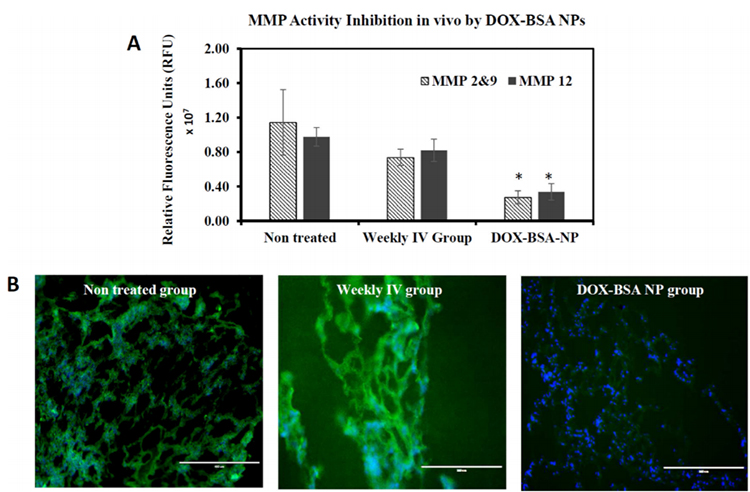Chronic obstructive pulmonary disease (COPD) is the third leading cause of death in US following cancer and heart disease. Current hypothesis regarding mechanism of emphysema suggest that chronic exposure to cigarette smoke and particulate matter causes irritation in the alveoli and this triggers an inflammatory response. This response attracts a host of inflammatory cells like macrophages, neutrophils, and lymphocytes. Cytokines, reactive oxygen species, prostaglandins, leukotrienes, proteases mediate the progression of the disease. This results in poorly reversible airway obstruction due to the destruction of alveoli and elastin fibers in the lung. Currently available treatments for COPD aim at only providing temporary relief to the patients by mitigating inflammation or by the action of bronchodilators. we investigated a novel method of drug delivery, in a rat elastase model of emphysema, with a systemic injection of nanoparticles loaded with doxycycline, an MMP inhibitor. We took advantage of elastin damage in emphysema and tested our hypothesis that anti-elastin coated bovine serum albumin (BSA) nanoparticles injected intravenously will target the lungs and will release doxycycline (DOX) over a period to suppress MMP activity in lungs. We found that such targeted nanoparticles loaded with doxycycline hyclate can suppress MMP activity in the lungs for prolonged periods
4.
Figure 4: (A) Non-treated group and Weekly IV group rats showed high MMP activity. Weekly IV group rats showed slight decrease in MMP activity compared to the Non-treated group but this was not statistically significant. It suggested that weekly drug injections were ineffective in inhibiting MMPs in lungs. When DOX-BSA NPs were delivered systemically only once at day 3, lungs showed significantly less MMP activity even after four weeks. (B) In situ zymography is used to detect active MMPs in histological sections. When the intensity of fluorescence was compared between Weekly IV and DOX-BSA-NP groups, we observed a significant suppression of signal from DOX-BSA-NP group’s lung section compared to the IV drug injection
References
4. Parasaram, V., Nosoudi, N., LeClair, R. J., Binks, A., & Vyavahare, N. (2016). Targeted drug delivery to emphysematous lungs: Inhibition of MMPs by doxycycline loaded nanoparticles. Pulmonary pharmacology & therapeutics, 39, 64.
